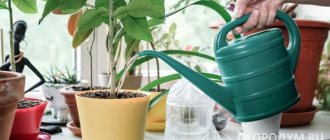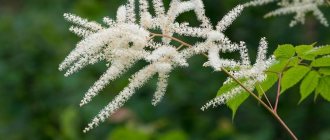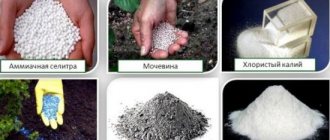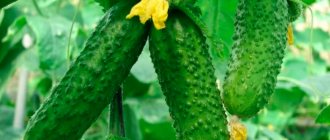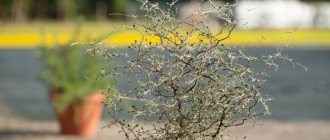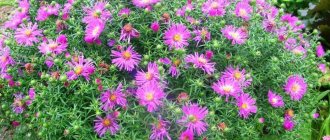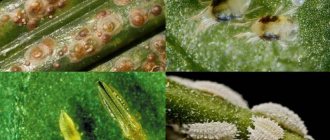Which plants should not be given shine?
Not every plant tolerates leaf polishing well. Before the procedure, make sure that such treatment will not harm your flower.
Gloss can be given only to those plants whose leaves have a smooth and shiny surface, as well as an even shape. They shouldn't have a gun on them.
You cannot polish leaves with an openwork or velvety texture, pubescence, or spines. Plants with delicate and sensitive foliage should also not be subjected to this procedure.
Only adult leaves are allowed to be polished. The procedure is contraindicated for young foliage, as it can be easily damaged. You should rub only the upper part of the leaf plate, it is better not to touch the lower part.
Olive oil
To achieve a strong glossy shine, it is better to use olive oil. Apply a small amount of product to a sponge or cloth and treat the entire surface of the foliage with it. Remove excess oil with a paper towel or dry cloth.
Please note that this product creates a film on the surface of the leaves that interferes with the process of moisture absorption and normal plant respiration.
Therefore, you can use oil no more than once every 2-3 weeks. The rest of the time, the flower should be wiped with plain water.
Cleaning leaves
Clean the leaves before polishing. Use a soft, damp sponge or cloth to remove dirt and dust.
To keep less dirt from accumulating on your plants, periodically rinse them with warm water from a shower with a fine spray nozzle. Cover the soil in the pot with film so that it does not get wet and does not absorb too much moisture.
Delicious oatmeal and honey pie: a great dessert recipe without sugar and flour
The young wife of Valery Syutkin: what does she do
Preparing homemade puree: what young mothers waste time and energy on
Once the leaves are clean, they can be polished. Next we will look at different tools that can be used for this purpose.
Polishing stages
Flower shops have a large selection of industrial polishes for plants:
- in the form of sprays for plants with small leaves;
- liquid polishes for adding shine to large-leaf flowers;
- wet wipes soaked in shine product.
Before using a chemical, you must carefully study the instructions for use and do everything in order:
- Remove dust and dirt from the leaves.
- Apply polish for testing on 2 leaves and only on the top side.
- Wait 2 days and watch the flower.
If the plant has not withered or faded, then you can use polish over the entire surface of the flower. Under no circumstances should the product be used more often than indicated in the instructions.
Plants polished with an industrial product should not be placed in direct sunlight. This can lead to chemical burn of the leaves.
Store products
There are polishes and sprays for plants on sale. They quickly add shine to the foliage and are beneficial for flowers. These products are used according to the instructions. Usually they are applied to a cloth and wiped from the top side of each sheet.
But these drugs have significant drawbacks. They are toxic to humans and have a pungent odor. You can work with them only in a ventilated area, wearing a mask and goggles. Therefore, many gardeners prefer to use home remedies, which we will discuss below.
How to wipe the leaves of indoor plants for shine: a DIY remedy at home
How to wipe the leaves of indoor plants to make them shine? You can wipe the leaves of home flowers with polish made at home. We will list you the means that are most effective and harmless.
- You need to mix one part beer (it must be non-alcoholic ) with two parts water. Tested: beer is great for wiping plant leaves and does not harm them. But don't forget to dilute it with water.
- By rubbing the leaves with succinic acid , you will not only give it gloss, but also have a healing effect. To wipe the leaves, you will need to dilute one tablet of succinic acid in 150 ml of water, moisten a soft cloth in this mixture and wipe them until they shine.
- castor oil , undiluted with water , and rub the leaves with it. Castor oil produces a healing effect on the plant.
- Using a silicone brush, apply crushed egg yolk , and then rub using a paper towel - after this procedure the plant will be filled with shine. But in the summer it is undesirable to use egg yolk, since under the influence of heat it will emit a specific smell that insects will flock to.
- Mix one part water and two parts milk , soak a sponge in the mixture and wipe the flower leaves with it. The shine from this product is not as active as from others, but it works and, moreover, is completely harmless to plants.
- You can also wipe orchid leaves with a regular banana peel. Mash the inner side of the peel in your hand and rub it on the leaves of the indoor plant. After rubbing with the peel, particles will remain on the leaves - they will need to be wiped off with a soft cloth.
- You can take one part citric acid, two parts glycerin and dilute with a small amount of water. Orchid leaves will shine when rubbed with this mixture, but glycerin is not the best remedy for plants.
Leaf care
Banana peel
Peel the banana. Remove any coarse fibers from the inside. Then mash the banana skin well in your hand.
Rub each leaf of the plant with the inside of the skin. If there are any particles of skin left on the sheet plate, remove them with a soft cloth. This procedure not only improves the appearance of the plant, but also feeds the flower with potassium.
Cleaning flowers with large leaves
It is easiest to clean crops with large foliage, such as Dieffenbachia. All you need is a soft, damp cloth.
The water should be at room temperature. It is recommended to filter it to avoid new stains due to various impurities contained in tap water.
Illustrations for the article are used under the standard license ©ofazende.ru
Nonalcoholic beer
For this procedure, you can only use non-alcoholic beer. Take 1 part drink and 2 parts water. Mix liquids. Wipe the leaves with the prepared mixture and they will shine.
What natural sounds should you listen to to lift your mood and relieve stress?
How to make a bright vertical flower bed for a summer cottage: master class
The prototype of the European constitution appeared in Rome: where did the common people go?
Banana peels
Banana peel contains a large number of useful microelements, including potassium, sodium, manganese, calcium, magnesium, phosphorus, iron and sulfur.
Therefore, by wiping the foliage with the inside of banana peels, you can not only clean the plants from dust and give them a glossy shine, but also nourish them with an additional portion of microelements.
To avoid causing an excess of nutrients, use banana peels no more than once a month. In between procedures, you can use plain water for cleansing.
What products should not be used
Plants should not be wiped with liquids containing alcohol, such as rubbing alcohol or high-proof beer. These products dry out and damage the leaves, which leads to spots.
Beeswax is also not a suitable polishing agent. It gives an uneven shine and collects in pellets. In addition, the wax clogs the stomata of the leaves and prevents the plant from breathing.
Glycerin gives the leaves an excellent shine. But it is not advisable to use this remedy. It contains fats that prevent oxygen from entering the plant.
How to clean plants with “fluffy” leaves?
It is necessary to select domestic crops whose foliage is covered with lint. These include geraniums, achimenes, violets and other plants. It is not recommended to wash them often - the foliage dries out problematically (the droplets are retained by fluff), which results in problematic situations. For example, sunburn or rot.
But you can’t help but fight the settling dust! To preserve the decorative appearance of a violet, you usually have to work hard. Tilt the flower and brush away dirt from its center, remove dusty deposits with a soft brush.
Every two to three months you only need to have a “shower” once. But make sure that the plant dries in a warm and dark room. And, of course, drafts are strictly prohibited.
Can violets be washed? Photo for publication is used under standard license ©ofazende.ru
Washing and showering
All indoor plants that are not afraid of getting wet love periodic showering. For large-leaved crops that can be wiped by hand, one such procedure per month or at least washing during general cleaning is enough. Small-leaved plants need to be showered or washed much more often, since it replaces manual cleaning.
The most difficult thing in any bath procedure for indoor plants is to protect the soil from getting wet and dirty. Even if you don’t plan to use soap solutions, dirt and dust along with water will get into the soil and in the future may become an additional factor in the appearance of problems in the development of plants. It is impossible to completely protect the soil, especially for plants with dense bushes or turf. But it is quite easy to cover open ground as much as possible and minimize damage from getting it wet. To do this, it is enough to use plastic film or a bag to cover all the soil around the perimeter of the pot, bringing the film as close as possible to the plant itself. For small containers and compact plants, you can simply cover the soil with your hand.
Take care of the water temperature in advance. Most decorative foliage indoor plants do not like not only watering, but also spraying with water whose temperature is lower than the room temperature. But if only selected capricious species prefer watering with warm water, then for showering it is mandatory for all plants. It is better not to overdo it with heating: washing is carried out with water, the temperature of which is 5-10 degrees higher than room temperature. The maximum temperature for showering plants is usually limited to 30 degrees.
For severe contamination, use soap solutions. Using cosmetic soap on indoor plants is not the best option. Liquid soap without additives or regular laundry soap, baby soap and baby shampoo remain the optimal products.
For showering or washing, it is better to place the plant not just in the sink or bathtub, but in a large bowl or basin. For plants that are not afraid of contact with leaves and are strong enough, you can shower them using a shower. But for indoor plants it is always better to carry out this procedure carefully, manually, using a watering can, or strictly control the water pressure, making it the weakest.
Washing leaves of indoor plants in the shower
The washing procedure itself is quite simple.:
- Water the plants with warm water, carefully wiping the leaves with a soft cloth or sponge, paying special attention to heavily soiled areas and directing the flow of water to where it is needed.
- If it is necessary to treat heavily contaminated leaves with soapy water, carefully tilt the plant so that not a single drop of water falls on the polyethylene covering substrate. Soap or shampoo is foamed and carefully applied with a sponge to the contaminated leaves, trying to reduce the time of contact with detergents to a minimum.
- If soap solutions were used, they must be washed off with plenty of warm water (it is not individual leaves that are rinsed, but always the entire plant).
- When washing, special attention should be paid to the lower leaves: it is better to rinse them additionally or make sure they are clean by additionally spraying the surface with a spray bottle.
Shower for ficus
Ficus is a living organism, and it also loves to swim. But if large-leaved ficus can still be dealt with manually, then plants with small leaves (ficus Benjamin, fern, dracaena, etc.) are much more difficult to clean. A shower, which many houseplants love, will help here.
When arranging a bath for your green friends, you need to protect the soil from washing out (with film or cloth), monitor the water pressure, which should be very small, and its temperature – no more than 30 degrees. If the ficus is very dirty, then you can use a weak solution of shampoo or baby soap, only after cleansing you need to thoroughly rinse them off the leaves.
A clean and healthy plant is the best decoration for your home interior. We hope that the little tricks you can use to wipe your ficus to make the leaves shine will be useful to you in practice.
